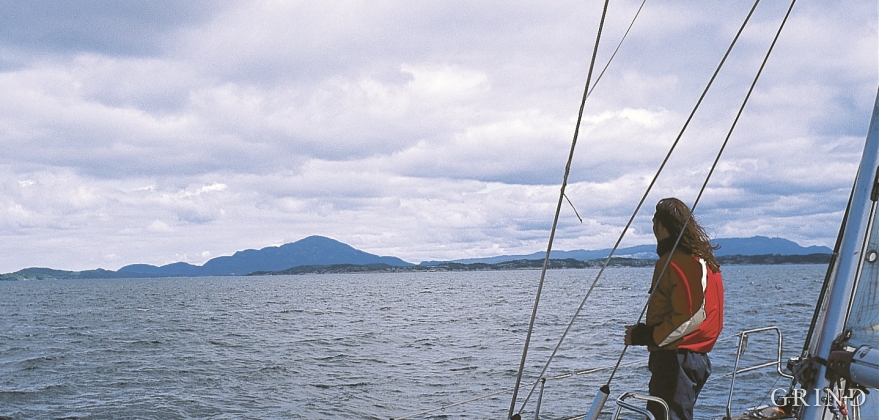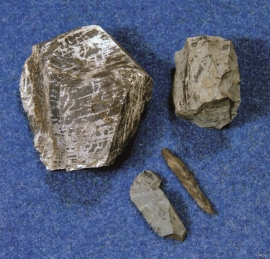Published: 21.07.2015 | Author: Haakon Fossen
"VOLCANO" AT BØMLO
Siggjo is a cone-shaped, volcano-like mountaintop in the part of Hordaland where one finds the best preserved volcanic rocks. The rock types originate from one or several volcanoes that spewed out glowing lava and ash. But, the shape of the mountain, as it appears today, formed later and by completely different forces.
Siggjo rises about 400 metres over the level strandflat. It is one of the most distinctive mountains in Sunnhordaland and is a recognized navigation beacon. When the Hanseatics sailed toward Bergen, they knew that they were on course when Siggjo appeared on the horizon.
The reason that there is still a mountain on the strandflat just here is that the acidic volcanic layer, that geologists call rhyolite, is harder and weathers much more slowly than the surrounding bedrock. Over millions of years the landscape around Siggjo has been worn down by erosion by rivers and later by glaciers, while the mountaintop endured.
The last volcanic eruptions at Bømlo took place about 470 million years ago. At that time the landscape here was dramatic, perhaps resembling the volcanic chain along the west coast of America. Some of the lava was more acidic and viscous than that which had dominated Bømlo 20-30 million years earlier, and which we find for example at Finnås. The acidic lava built up high volcanoes, and volcanic eruptions occurred often, during which both solidified and viscous lava was hurled many kilometres up into the air. Some of the fragments were still viscous and glowing hot when they hit the ground as several centimetre-sized clumps. Bedrock that was created in this way can be found at Siggjo.
The rhyolite lava in this area was carved out of the mountainside and used for tool-making in the Stone Age. Among other things, the stone was used for making arrowheads and knives. For axes, the basaltic lava on Hespriholmen was better suited. A quarry site is found on the northwest side of Siggjo, where the bedrock was quarried with fire and water (a technique involving setting fire).
Most of the Siggjo rhyolite was used in Hordaland and North Rogaland, but there have been finds as far north as Kristiansund, and east to the Bjornes Fjord on the Hardanger Plateau, and as far south as Lista and Lillesand. This unique raw material from Bømlo, which was in use for nearly 2000 years, thus provides useful knowledge of trading and interaction between the various parts of the country in the Stone Age.
- Nordås, J. A. Volcanological and geochemical study of the lower palaeozoic Lykling ophiolithic complex and Siggjo complex, Central Bømlo, Western Norway. Cand. real avhandl. UiB.




